Discover the inner workings of an electric guitar with our comprehensive guide to electric guitar anatomy. From the pickups to the bridge, learn about the different parts that make up this iconic instrument and gain a deeper understanding of how it produces its unique sound.
Electric Guitar Anatomy Diagram

Headstock
The headstock is located at the end of the guitar neck and holds the tuning pegs. It plays a crucial role in guitar anatomy as it is where the strings are anchored and adjusted for tuning.
A headstock’s design may vary between guitars and often contributes to the instrument’s overall aesthetics.
Tuning Pegs
Tuning pegs are located on the headstock of an electric guitar. They are used for adjusting the tension of the strings, thus tuning the guitar.
By turning the pegs, you can tighten or loosen the strings to achieve your desired pitch.
Tuning pegs are integral to guitar playing, contributing to the instrument’s functionality and allowing you as a musician to maintain accurate pitch.
Nut
The nut is a small component at the top of the guitar neck, guiding the strings to the tuning pegs.
It plays a crucial role in electric guitar anatomy by spacing and supporting the strings, helping maintain proper string height and alignment.
It is an essential guitar part for tuning stability and influences the overall playability of your electric guitar.
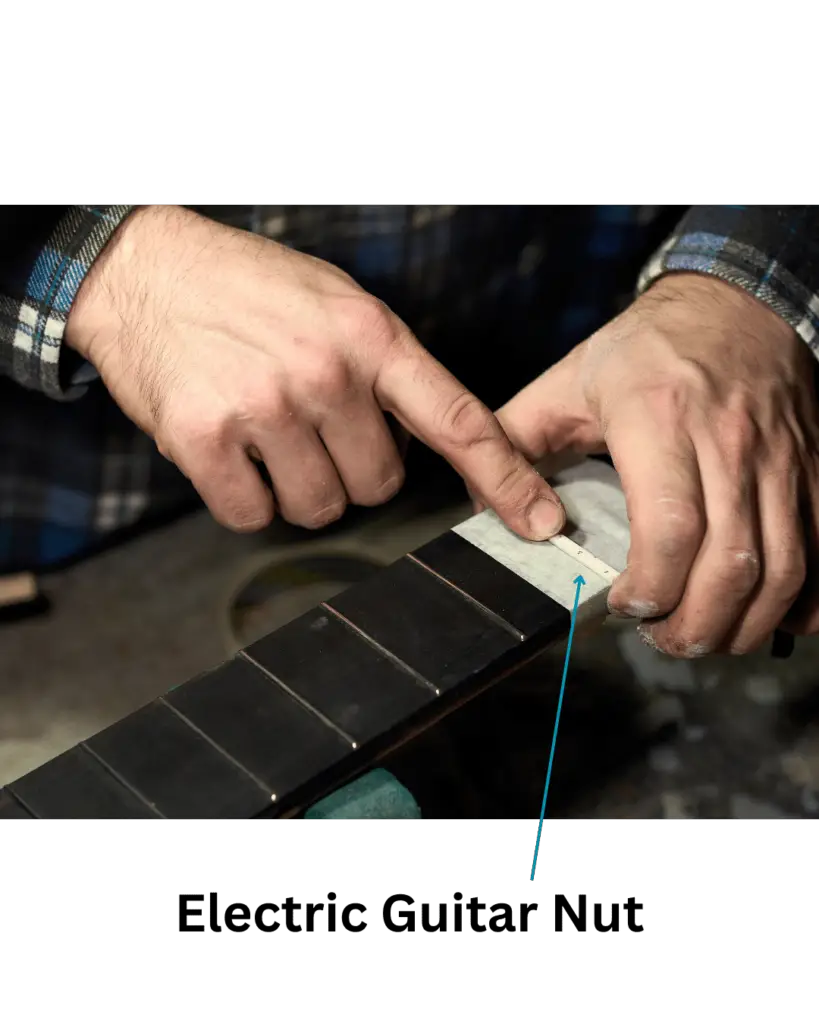
Truss Rod Access
The truss rod access on an electric guitar is an opening, often near the headstock, that provides access to the truss rod.
This is a key feature for adjusting the neck’s curvature, which helps control the guitar’s action and playability by counteracting string tension.
Truss rod access is also crucial for maintenance, allowing adjustments to ensure optimal neck alignment and playability on the electric guitar.
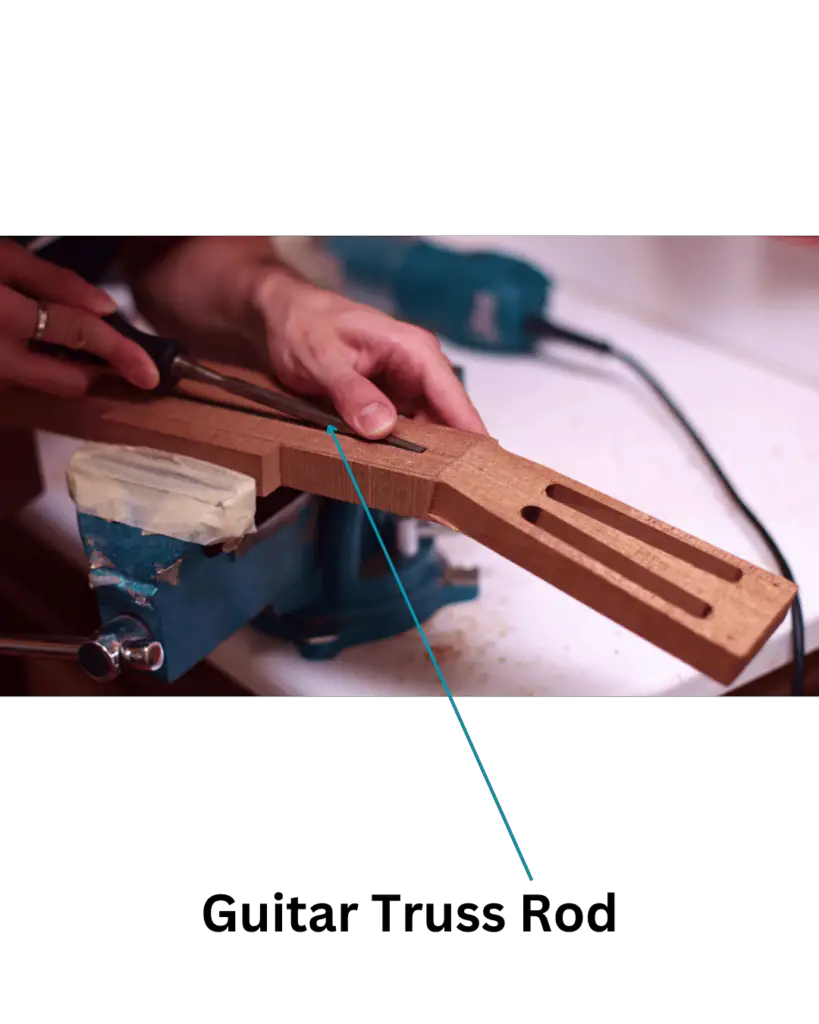
Fretboard/ fingerboard
The fretboard is on the front side of the guitar neck, featuring metal frets where guitar players press to change the pitch of the strings.
It is a vital part of the guitar, allowing for note production.
Lastly, the fretboard’s material and build quality significantly influences the playability and tone of your guitar.
Neck
The neck is a component of an electric guitar attached to the body. It includes the fretboard and holds the strings.
A guitar neck’s design and construction influence playability, and its connection to the body impacts the instrument’s overall stability and tone.
The neck is one of the greatest contributors to the overall feel and performance of the electric guitar.
Frets
Frets are metal strips along the neck of an electric guitar, dividing it into segments for different notes.
They provide specific positions for guitarists to press down on the strings. Changing the string length by pressing on different frets alters the pitch of the notes produced.
Frets are fundamental for creating different musical tones on the electric guitar or any other fretted instrument.
Fret markers/ inlays
Fret markers or inlays are visual markings on the fretboard of an electric guitar. They relate to guitar anatomy by serving as reference points for players.
These markers help you navigate the fretboard, making it easier to identify specific fret positions while playing.
Fret markers contribute to a user-friendly design of the electric guitar.
Body
The body is the main part of an electric guitar, typically made of wood. It serves as the foundation for other components and influences the instrument’s tone.
The body’s shape, size, and wood type impact the sound produced by your guitar. They also impact the guitar’s comfortability.
Components like pickups, bridge, and pickguard are attached to the body, making it the primary contributor to the overall functionality of the electric guitar.
Strap button/ peg
The strap button or peg is a small, often metallic attachment on the body of an electric guitar. There are 2 of them, one on both sides of the body, and they are used for attaching a guitar strap.
These buttons allow you to secure a guitar strap, providing support and comfort while standing and playing.
Pickguard
The pickguard is a protective plate on the body of an electric guitar, usually made of plastic. It shields the body from scratches caused by the pick during playing.
Additionally, the pickguard can have aesthetic and stylistic elements, contributing to the overall design of the electric guitar.
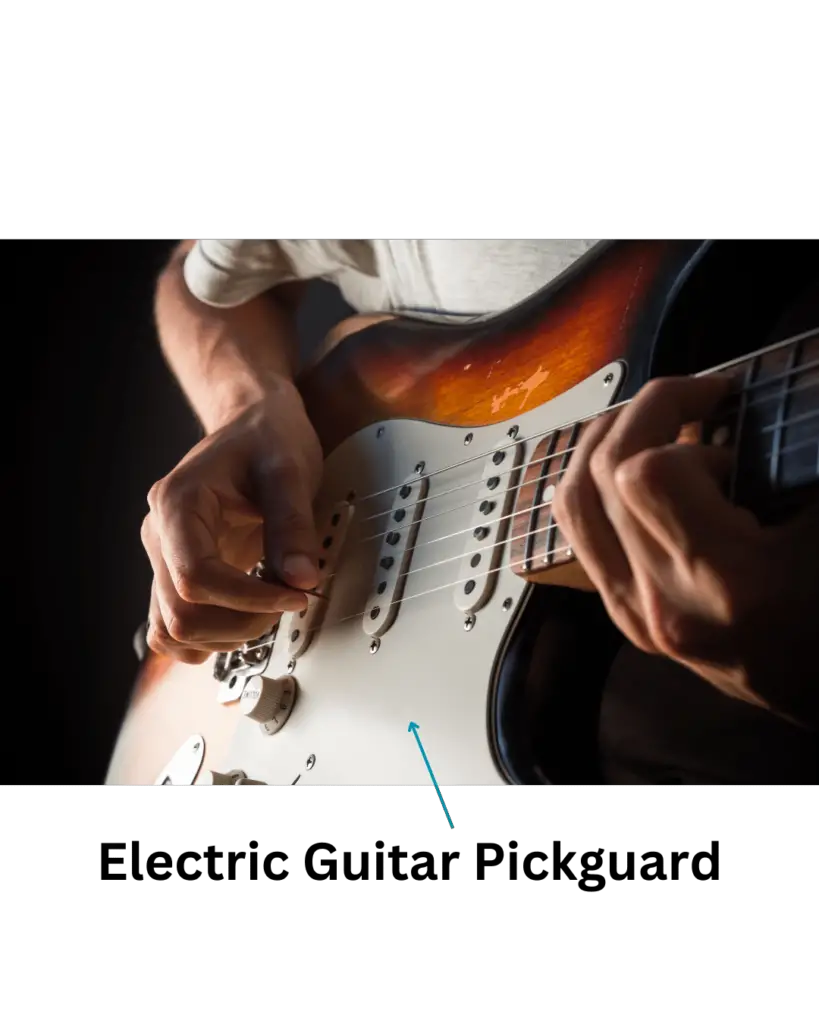
Volume knob
The volume knob on an electric guitar is a control located on the body. It allows you to adjust the instrument’s output volume.
This knob is integral to an electric guitar’s anatomy, providing immediate control over the sound output and contributing to the expressive capabilities of the electric guitar.
Pickup selector
The pickup selector on an electric guitar is a switch usually located on the body. This allows players to choose between different pickups or combinations.
By toggling the pickup selector to change pickups, you can achieve various tonal options, influencing the character and sound of your electric guitar.
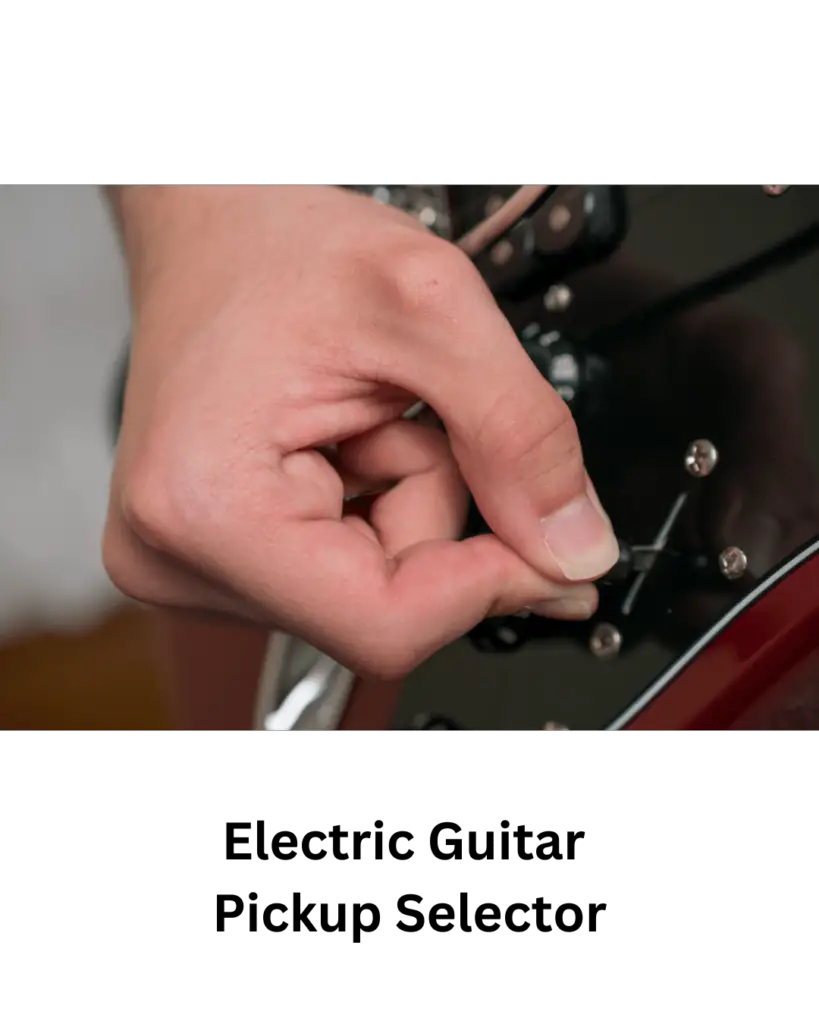
Tone knob
The tone knob on an electric guitar is a control situated on the body. This enables guitar players to adjust the tonal characteristics of their instrument.
By using the tone knob, you essentially modify the “brightness” or “warmth” of the sound.
Jack (input/output)
The output jack on an electric guitar is a socket typically located on the body. It’s the spot where players plug in a cable to connect the guitar to an amplifier or other audio equipment.
This allows for the transmission of the electric guitar’s signal for amplification and further sound processing.
Bridge
The bridge is a main component on the body of an electric guitar. It supports and anchors the strings.
The bridge also aids in transmitting string vibrations to the guitar’s body, affecting its overall tone.
It also allows for adjusting string height and intonation.

Whammy or Tremolo Bar
The whammy or tremolo bar on an electric guitar is a lever attached to the bridge. It’s a dynamic guitar part that allows players to manipulate the pitch of the notes by altering the tension on the strings, and is not found on all guitars.
The whammy bar enables dive bombs, vibrato, and unique pitch variations not achievable otherwise.
You’ll probably want a tremolo bar if you’re interested in musical versatility and advanced guitar techniques.
String Saddles
String saddles on an electric guitar are small components on the bridge that support and help adjust the height of the strings. These provide a point of contact for the strings, influencing their action and intonation.
The position and material of the string saddles impact playability and contribute to the overall setup and tone of the electric guitar.
Pickups
Pickups on an electric guitar are devices attached to the body, underneath the strings. They are responsible for capturing string vibrations and converting them into an electric signal. These signals are then sent to an amplifier, producing the amplified sound.
Pickups play a pivotal role in shaping the tone of an electric guitar, influencing the overall sound and versatility of the instrument.
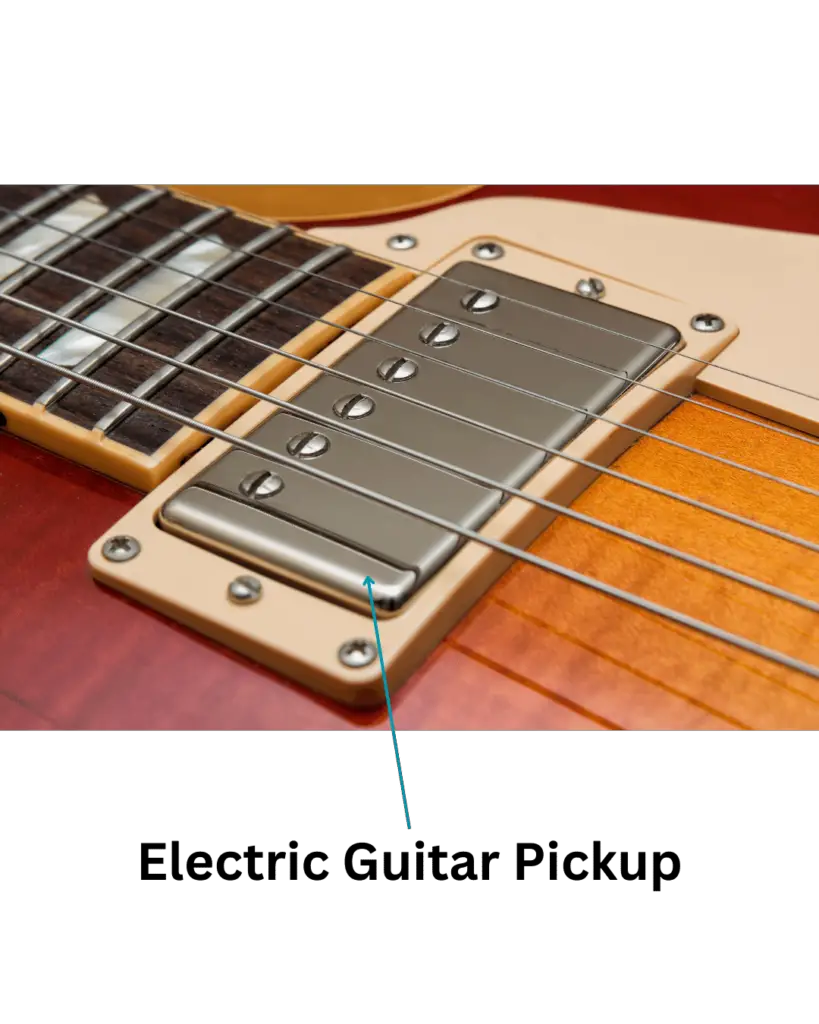
Strings
The strings on an electric guitar are metal strands stretched across the body and neck. They’re the fundamental components that, when plucked or strummed, produce sound vibrations.
The gauge, thickness, and tension of the strings impact the guitar’s pitch and tone.



